April 30, 2025
Letters from Indochina (Part 31)
By Simon J. Lau
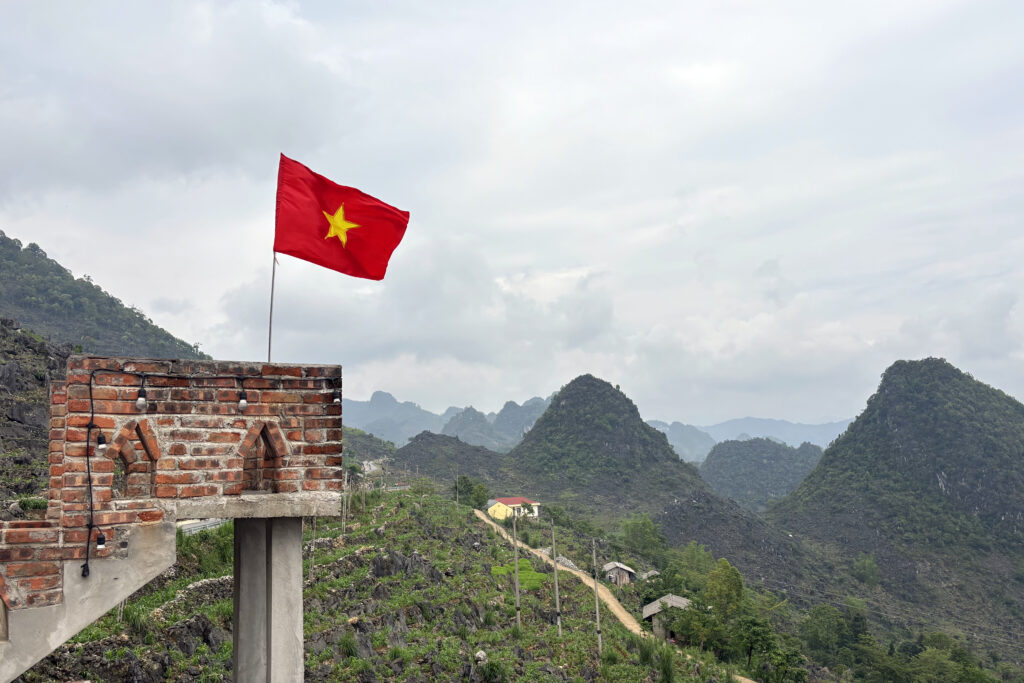
Today marks the 50th anniversary of the fall of Saigon. Or, as it’s known in Vietnam, Reunification Day. While the city of Saigon fell on April 30, 1975, the seeds of its collapse were planted years earlier. The U.S. signed the Paris Peace Accords in 1973 and began withdrawing its troops, officially ending American combat involvement in Vietnam. But the support didn’t end there. The U.S. continued supplying the South Vietnamese government with weapons, funding, and equipment, and for a time, it seemed like South Vietnam might be able to hold out.
Richard Nixon was a major supporter of the South, promising continued backing to President Thieu. But then came Watergate. Nixon’s resignation in 1974 and the political fallout that followed led to a dramatic shift in U.S. foreign policy. Congress became reluctant to keep sending money and weapons to a distant, unpopular war. When North Vietnam launched its final offensive in 1975, there was no appetite in Washington to intervene. Saigon fell quickly after that. Helicopters evacuating Americans from rooftops would become the lasting image of America’s exit from Vietnam.
Most of the large celebrations are being held in Saigon, likely a symbolic way for the government to assert its success over the former South. Out here along the Ha Giang Loop, I’ve only seen small signs of the holiday in the rural villages I’ve passed through, but I thought it was still worth writing about.

The highlight of today’s ride was passing through Ma Pi Leng Pass, easily one of the most dramatic stretches of the Ha Giang Loop. The road clings to the edge of steep limestone cliffs, offering sweeping views of terraced mountains and deep valleys below. It’s the kind of place where you slow down, not just for safety, but so that you can take in the views.
It actually took me two tries to see this viewpoint. The first time, the parking area for this stop was packed with motorbikes and tour groups, so I continued down to a second viewpoint just below. When it became clear that area wouldn’t compare, I decided to climb back up the pass and take a second shot at what was still an insane parking situation. I’m glad I did. I managed to muscle into a spot and finally take in the full scale of the landscape.
Below the pass, the Ngo Que River snakes through the canyon, a ribbon of turquoise cutting through the karst. There’s an option to take a boat ride along the river, but even from where I stood, snapping photos from the balcony of a cafe, I could hear the buzz of excited tourists around me talking about the boat trip. It was clear the spot was going to be overrun. I opted instead to spend my time exploring some of the smaller villages farther down the route.
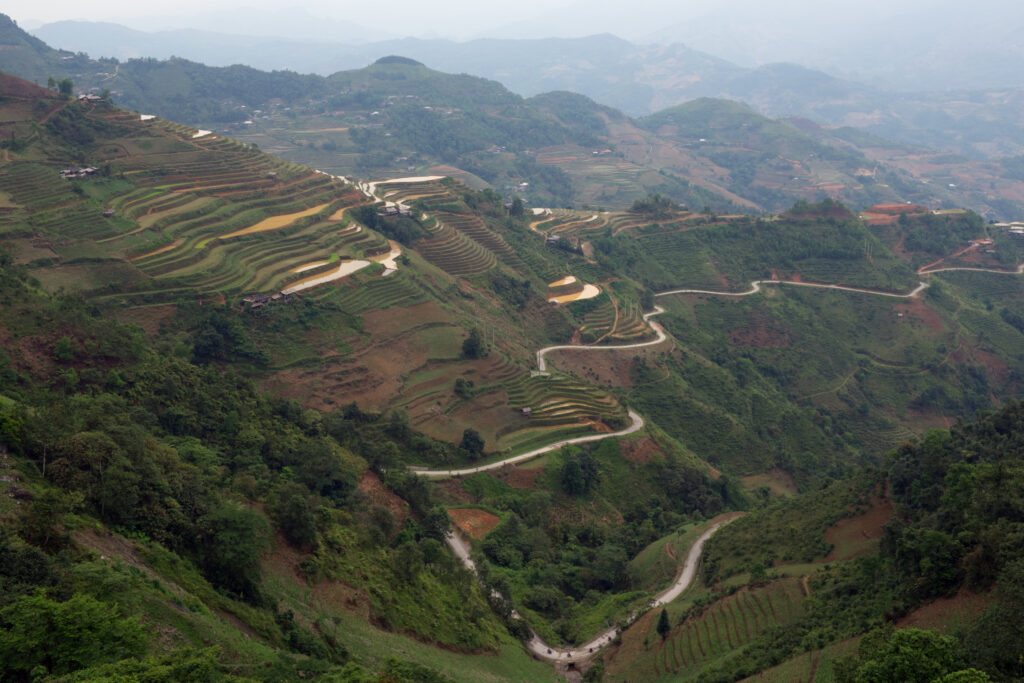
One of those stops was Mau Due, a small, quiet town with a handful of roadside shops, a market, and a few sleepy houses tucked into the hills. It doesn’t draw crowds, which makes it exactly the kind of place I like most.
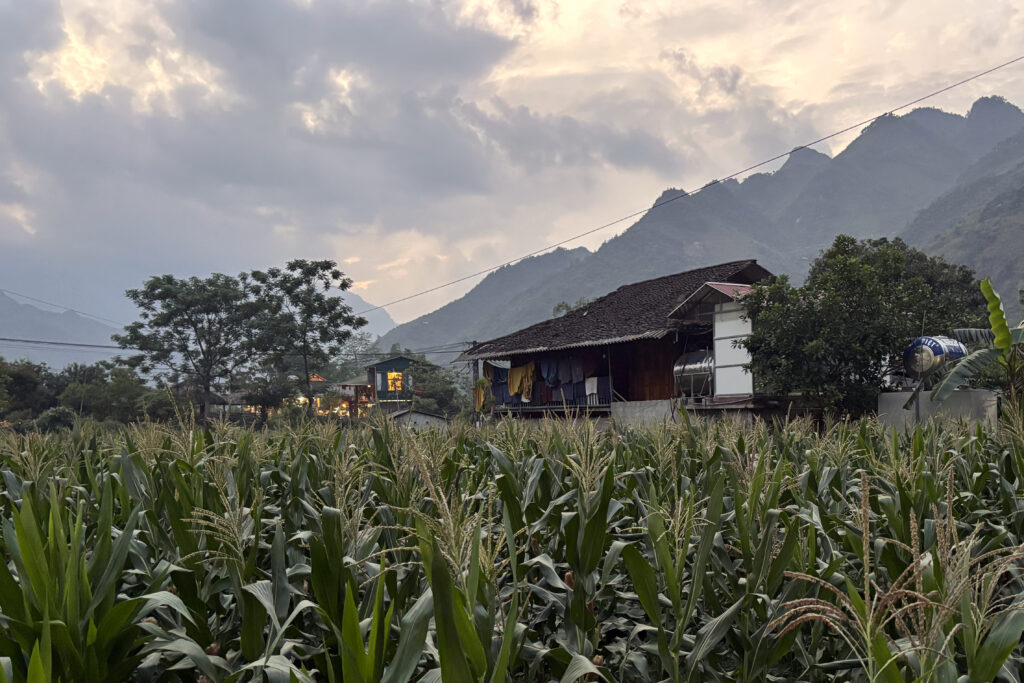
By 4 p.m., I arrived in Du Gia, my final stop of the day. Du Gia is a small village nestled in a valley, known for its traditional stilt houses, surrounding rice fields, and a river that cuts through the landscape. It’s become a common overnight stop for riders on the Ha Giang Loop, but it remains deeply rural.
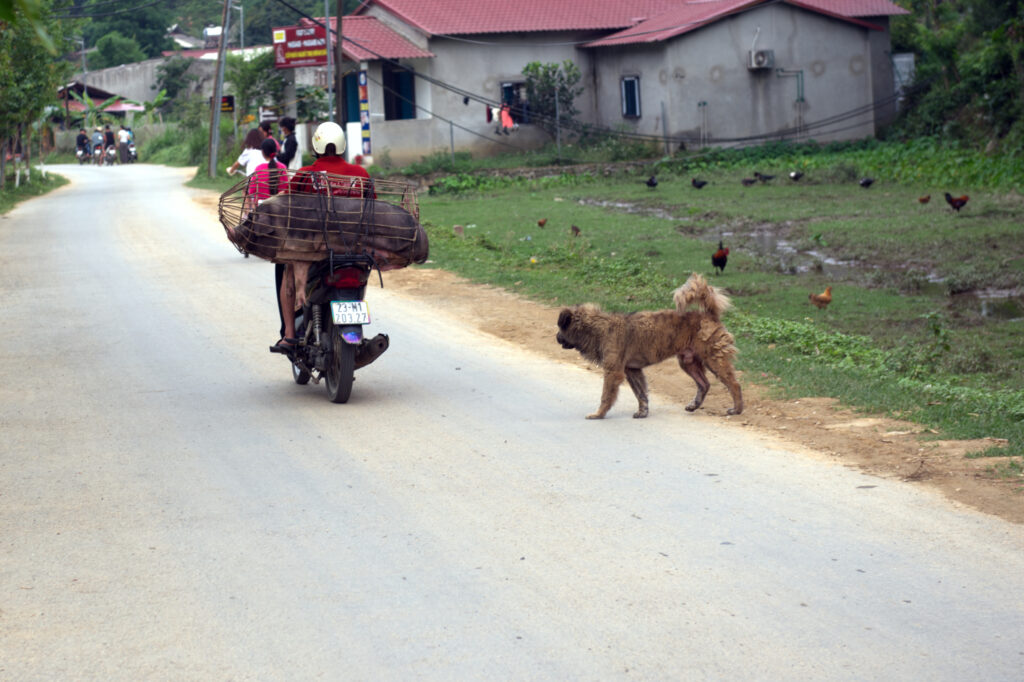
At one point, I saw a guy riding his scooter through town with a pig strapped to the saddle rack, a good reminder of exactly where I was.
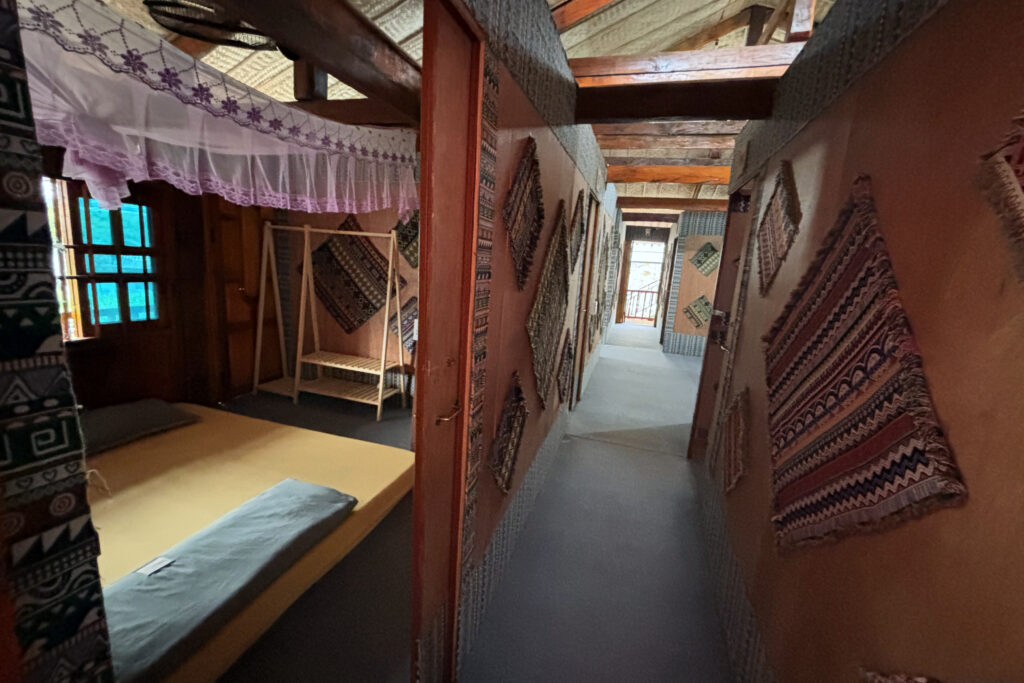
Tonight, I’m staying in one of those stilt houses. I’ve stayed in homestays with stilt houses before, but my rooms were always in some newer concrete addition tucked behind the main structure. This time, I’m actually sleeping inside the original house, one of the subdivided rooms in what used to be the central living space.
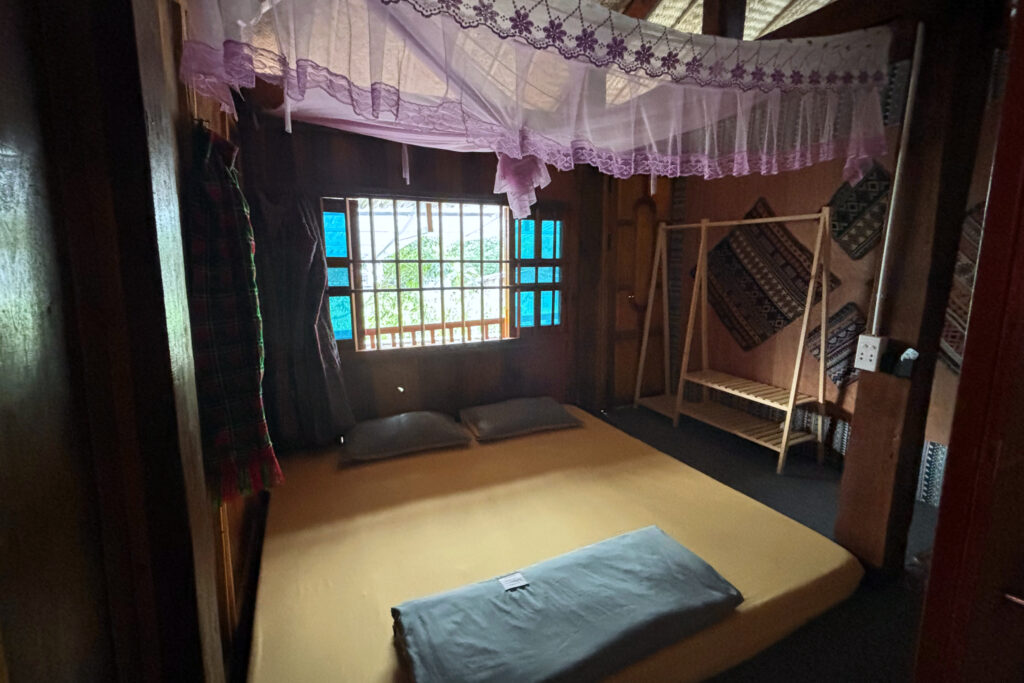
It’s basic: no AC, walls that don’t reach the thatched roof, and open gaps between the roof and walls that let in air, and whatever else is out there. There’s a non-zero chance I’ll regret this decision, but at $8 a night, it’s hard to pass up, especially for the experience.

Finally, my route from Dong Van to Du Gia (about 59 miles, or 95 kilometers).


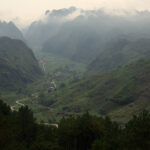

Comments are closed.